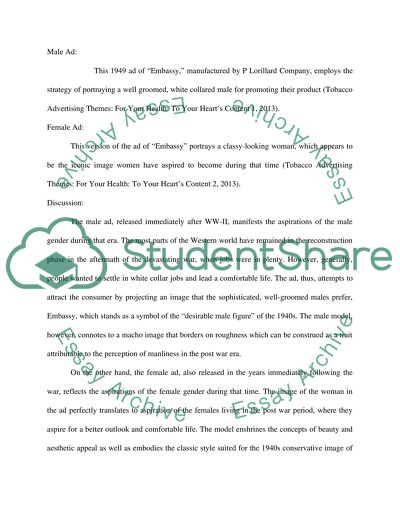Cite this document
(Gender Identities in Tobacco Advertisements from 1945-1990 Research Paper, n.d.)
Gender Identities in Tobacco Advertisements from 1945-1990 Research Paper. Retrieved from https://studentshare.org/marketing/1620229-illustrate-and-explain-using-visuals-on-tabacco-advertising-between-the-1945-1990-period-to-tell-the-difference-on-the-advertising-strategies-between-a-male-and-a-female
Gender Identities in Tobacco Advertisements from 1945-1990 Research Paper. Retrieved from https://studentshare.org/marketing/1620229-illustrate-and-explain-using-visuals-on-tabacco-advertising-between-the-1945-1990-period-to-tell-the-difference-on-the-advertising-strategies-between-a-male-and-a-female
(Gender Identities in Tobacco Advertisements from 1945-1990 Research Paper)
Gender Identities in Tobacco Advertisements from 1945-1990 Research Paper. https://studentshare.org/marketing/1620229-illustrate-and-explain-using-visuals-on-tabacco-advertising-between-the-1945-1990-period-to-tell-the-difference-on-the-advertising-strategies-between-a-male-and-a-female.
Gender Identities in Tobacco Advertisements from 1945-1990 Research Paper. https://studentshare.org/marketing/1620229-illustrate-and-explain-using-visuals-on-tabacco-advertising-between-the-1945-1990-period-to-tell-the-difference-on-the-advertising-strategies-between-a-male-and-a-female.
“Gender Identities in Tobacco Advertisements from 1945-1990 Research Paper”. https://studentshare.org/marketing/1620229-illustrate-and-explain-using-visuals-on-tabacco-advertising-between-the-1945-1990-period-to-tell-the-difference-on-the-advertising-strategies-between-a-male-and-a-female.


